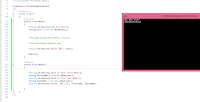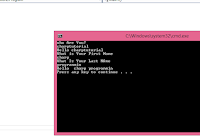Difference between Convert.ToString() and ToString()
-(Important for interview Question)
Convert.ToString() handles null,while ToString() doesn't and throws a NULL Reference Exception
-(Important for interview Question)
Convert.ToString() handles null,while ToString() doesn't and throws a NULL Reference Exception






















